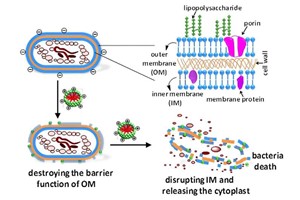Recent research conducted by GS1 highlights the significant impact of mislabelled or unclear food packaging on consumers with food allergies. According to the findings, 56% of allergy sufferers have experienced allergic reactions due to incorrect or confusing labels. In response, GS1 is promoting next-generation barcodes as a potential solution for providing accurate and instantly-updatable product information.
GS1 UK reports that 60% of shoppers with allergy-related dietary requirements read product packaging in-store to find allergen information, yet only 24% always locate the ingredients or warnings they seek. Moreover, individuals with food allergies are nearly twice as likely to distrust the information on labels compared to those without allergies (12% vs. 7%). Concerns include label accuracy (53%), vague language such as ‘may contain’ (52%), small text (27%), and lack of provisions for specific needs (13%).
The study indicates that over half of respondents attributed allergic reactions to misleading or unclear labelling, with 23% suffering multiple reactions. Consequently, 70% of individuals express nervousness about eating food not prepared by themselves or close family members.
To mitigate these risks, consumers have turned to various sources for allergen information: online searches (41%), manufacturer websites (24%), product leaflets (23%), and in-store staff (17%). Notably, 43% of respondents prefer scanning packaging with their smartphones to access product details.
GS1 UK's research also reveals confusion around precautionary allergen labels. A significant 72% of respondents believe that products labelled ‘free from’ should be entirely free of the specified allergen. However, GS1 explains that ‘free from’ labels do not guarantee the absence of other allergens. Moreover, the Chartered Trading Standards Institute (CTSI) notes that one in three vegan products contain milk and eggs, as vegan food is not yet legally regulated.
Inconsistencies in labelling across manufacturers further complicate matters, with 20% of consumers with allergies taking risks by consuming products with ‘may contain’ warnings. Alarmingly, 80% of respondents were unaware that manufacturers do not follow a clear definition of ‘may contain,’ 73% did not know there is no legal guidance on precautionary allergen labels, and 56% were unaware that such labels are voluntary.
GS1 UK advocates for next-generation barcodes to address these challenges. These barcodes, combining linear and QR codes, connect to a product’s unique identity and can be updated in real time, ensuring accurate allergen information is accessible.
The research indicates that 83% of consumers with allergies, compared to 58% without, are more likely to be influenced by QR codes that provide detailed product information. Currently, 64% of these consumers use smartphones to scan on-pack QR codes, and 33% are more likely to purchase products featuring a QR code. Additionally, 29% feel more confident about their purchase if a QR code is present.
Consumers with allergies prioritize information on full ingredient lists (57%), allergens (56%), health and nutritional details (41%), and precautionary allergen labelling like ‘may contain’ (37%) when scanning QR codes.
Food allergy expert Professor Adam Fox emphasizes the critical need for transparency in food labelling, stating, “Next-generation QR codes can only help to provide the transparency needed to keep people with food allergies safe.”
Sarah Knight, CEO of The Allergy Team, supports this view, explaining that QR codes could clarify terms like ‘may contain nuts,’ potentially saving lives and alleviating anxiety for allergy sufferers.
Julianne Ponan MBE, CEO of Creative Nature Superfoods and anaphylaxis sufferer, underscores the life-or-death stakes of unclear food labelling. She calls for a universal agreement on what ‘may contain’ means, asserting that QR codes powered by GS1 can revolutionize transparency for consumers.
Sarah Atkins, CMO and membership director of GS1 UK, concludes that QR codes powered by GS1 can ensure consumers have access to the necessary information to stay safe.
This year, Branston announced it would use the Orca Scan GS1 Digital Link QR solution on its packaging, providing allergen lists, sustainability information, and more. Similarly, Unilever adopted Zappar’s Accessible QR (AQR) technology to assist blind and visually impaired consumers via AI-powered virtual assistance.
The integration of next-generation barcodes promises to significantly enhance food safety and consumer confidence, particularly for those with food allergies.
packagingeurope.com











